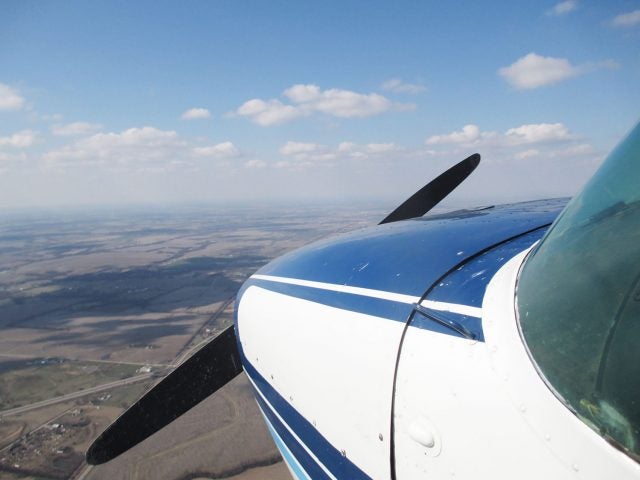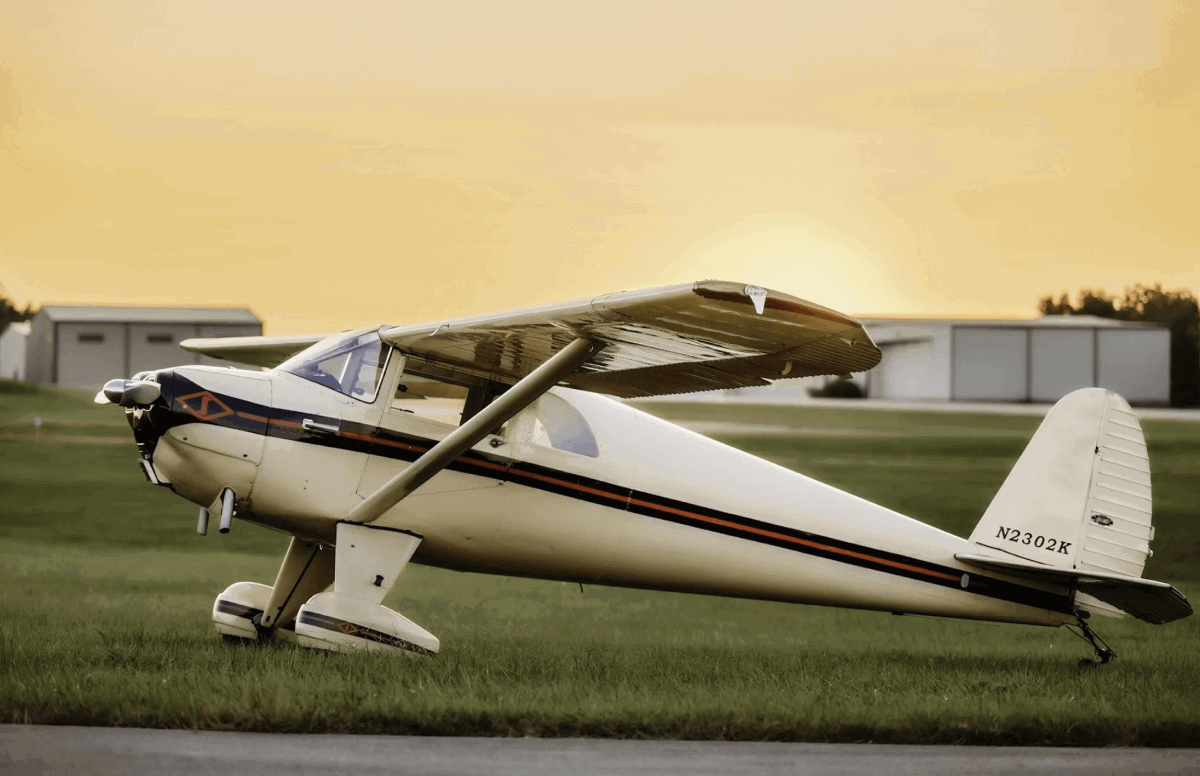
Whether it’s taking place at 400 feet AGL or FL 400, an inflight emergency requires immediate attention, analysis and action. In the first case, the ground is only seconds away; in the latter case, it will take several minutes to descend to safety. Regardless of the time you have available in an emergency scenario, a successful conclusion requires pre-planned coordination of all your resources.
Such planning for emergencies originates with training. If you’ve experienced fire warnings in the simulator, your practiced responses are much more likely to be correct than a haphazard flailing of controls and switches. As much as we dread undergoing “dial a disaster” scenarios in a simulator, they do reinforce correct responses.
Advance planning for emergencies involving loss of capability in vital systems begins with knowing how the various parts of your aircraft are structured. That helps us understand what a failure in a critical system would look like and how a workaround might be conducted. While it’s not possible to anticipate every conceivable emergency event, you can take advantage of systems knowledge to seek out the most likely potential failure modes. Playing such “what if” games can guide your actions in the correct path if there’s ever a loss of functionality.
The choices we make when an unexpected event crops up can make the difference between surviving and perishing. And making a choice to pursue an improved outcome is the essence of piloting. Inaction, by comparison, is in itself a choice, one to abdicate PIC responsibility.
What Was That?
I’ve had four engine failures in my 60 years of flying and a bunch of other malfunctions. From experience, I’ve learned that the “startle factor” causes us to freeze up momentarily when we’re first confronted with an emergency. A sudden noise or shudder jars us out of our mid-flight lethargy, and we begin to realize something is amiss. The order of our thinking then goes: 1. What’s happening? 2. I can’t believe this is happening! 3. Okay, it’s happening, what should I do? 4. Let’s revert to training and take action. 5. What can I do to make the best of the situation? The sooner you can you can speed through the first two or three “startle” stages, the sooner you’ll get down to the realities of coping with the situation.
Unexpected events can turn out to be annoyances, minor emergencies or major catastrophes. An engine problem might be resolved with a throttle, mixture or carb heat adjustment and, if the situation resolves and there’s no further recurrence, that makes it an annoyance, so we might continue on our way. If the problem remains, despite all our efforts, but the engine is still operating, we’re now dealing with a minor emergency; better head for the nearest suitable airport. If flames are seen shooting out of the cowling, the problem has escalated to major status; shut off all fuel to the engine and head down, now! Hopefully, through training and planning, you can handle an unplanned occurrence while it’s in the annoyance stage, before it becomes a full-flown major calamity.
Backing Out
Sometimes the urgent situation is found to be of your own making. What were you doing before the abnormal condition showed up? Your first act should be to reverse that action. Example: You touch down and apply braking, finding that the airplane darts for the side of the runway. Solution: Get off the brakes and apply aggressive nosewheel steering. Most likely, you’ve had a brake failure, so pressing harder on the brakes in a panic will only make the problem worse. Ameliorate the outcome as best you can; you can improve steering by adding aerodynamic pressure to the nosegear and by tapping the good brake gently while countering with full opposite rudder. Be ready to execute a groundloop as you reach the end of the runway, unless the overrun area looks welcoming.
Another example, taken from real life, was a sudden loss of the primary EFIS display when switching on cockpit lighting at dusk. In that case, resetting the panel lights to the previous daytime setting restored the EFIS to full visibility; as it turns out, display brightness was automatically dimmed with lights activation.
Not always is there an instantaneous correlation between control movement and failure or recovery. I once moved a fuel tank’s selector to a different setting, and a moment later we experienced an engine power surge. I quickly reset the selector, and the problem alleviated itself after an anxious few seconds. As it turned out, the selector handle was misaligned, and the valve was not opening as indicated. Again, if you experience a failure after an action, undo the last step you took before proceeding further.
There are sudden failures, and there are slow failures. The latter are insidious, in that we tend to rationalize them into insignificance, to our later regret. Icing accretion begins as a minor performance loss, causing us to suspect an engine management problem, but taking action by adjusting power simply allows the ice to build up further. One should always consider more than one explanation and choose the best, most likely solution first while not ignoring the alternative possibilities or letting them become much worse while pursuing other leads.
The important thing is to take action to alleviate the problem and argue about the details later. On Jan. 14, 2020, Delta Airlines Flight #89 lifted off from Los Angeles International Airport, its two giant turbofans struggling to push it into the air on its away to Shanghai, China. Suddenly, one engine began to exhibit compressor stall, and it was quickly evident that the airplane wasn’t going to the destination that day. The crew took the wisest course of action and requested a return for landing as the recalcitrant engine was brought under control. While most of the media attention that day was focused on the captain’s decision to dump fuel rather than risk an overweight landing, the emergency was apparently handled correctly, under the circumstances. The airplane and its occupants survived to fly again.
Basic Beginnings
With the sometimes-complex systems management required in today’s aircraft, it’s easy to lose track of the basic concepts that make controlled flight possible. If faced with an abnormal aircraft performance indication, place the airplane’s attitude in level or just slightly nose-up position and adjust power accordingly. See if other performance parameters match the expected results from the level-flight attitude. A pitot/static should be obvious from the nonsensical indications.
If tracking a course, indicated mileage should be counting down as you approach a waypoint. If it increases instead, you may have selected the wrong source or tuned a different station. Be especially aware of similarly aligned ILS and VOR transmitters; it’s easy to swap the desired one for the co-located facility, in which case the distance shown begins to make no sense. The lack of an ILS glideslope or localizer indication, when you know you should be established inbound, likely means a basic error of GPS versus ILS mode selection has occurred, or the wrong frequency was input. Always cover the basics first.
In the days of spinning iron gyros, which are not quite gone yet, I often saw pilots I was training attempt to intercept a course with faulty HSI or DG indications, sometimes with failed slaving or ignored precession. “Have you checked the whiskey compass?” I had to ask; most had never considered that old master instrument up in the windscreen, which can still serve as a tie-breaker when conflicting opinions are presented. Again, if in doubt, go back to the most basic data source.
Do you have an engine acting up? The basics of power generation still apply; an engine needs fuel, air and ignition to run. If you’ve got the ignition “on” and the engine is turning, there’s most likely a fuel delivery problem, followed by a restriction in airflow. Knowing your systems’ possible faults, and the way to work around them, should enable you to restore the engine’s health.
Never, Ever Give Up
Control is basic to flight. In an emergency, concentrate on aircraft control, even if the autopilot is being used. Troubleshooting is important but not to the exclusion of staying clear of the rocks and holding a direct course toward a safe airport. Maintaining aircraft control is priority one, even in extreme cases of dire emergency. Crashing out of control seldom ends well. As the late, great fighter pilot Robert A. Hoover put it, “Fly the thing as far into the crash as possible.” Steer for something soft and cheap, my old instructor said.
There’s always something you can do to improve the outcome of an emergency, even if it’s only maintaining control over the flight path. A fire in-flight, probably the most serious imaginable emergency situation, can be put out by starving it of fuel, extinguishing it or shutting off its ignition. Meanwhile, be moving toward a suitable landing spot and prepare all occupants for speedy extrication. If dealing with a flight control malfunction, use whichever axes are still responsive and see if trim adjustment is effective. If faced with a crash scenario, use all available inputs to first avoid face-on collision and then slow the rate of deceleration by seeking progressive impacts. If your plance is equipped with a whole airplane parachute system, follow the manufacturer’s instructions and pull the big red handle.
Emergencies come in all sizes — minor, major and massive. Our job as pilots is to consider all possible eventualities and the ways to deal with them. Then, avoid the paralysis of panic and execute the previously developed plan of action. Always expect the unexpected and be prepared to deal with it.




